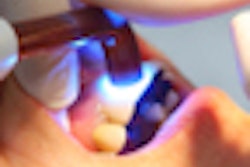
After attending a meeting on plaque in the late 1990s, Albany, California dentist Nathan Kaufman, DDS, began to see just how much dentists could do to prevent caries. The realization gradually led him to transform the way he treats his patients -- and the way he makes his living. "We're changing the paradigm," he says
Dr. Kaufman has joined a new movement in dentistry called caries management by risk assessment (CAMBRA). Adherents use diagnostic tools to estimate each patient's risk of developing cavities, then bring to bear preventative therapies -- frequent cleanings and exams, fluoride varnishes and gels, calcium phosphate, xylitol gum and antibacterial rinses -- to according to the patients' needs.
The movement is gaining steam; the Journal of the California Dental Association is devoting its October and November issues to the topic, along with an endorsement of CAMBRA signed by representatives of most U.S dental schools. "Not only is it scientifically interesting, it's the right way to treat patients," says Dr. Kaufman, who argues that CAMBRA will soon become the legal standard of care.
When the approach works, patients get far fewer cavities. For the dentist, that means less money from restorations. But it also means attracting more patients, Dr. Kaufman says. "If you have twice as many patients but do half as much work on each one, you make the same money."
Not everyone is ready to hop on the CAMBRA wagon. Some dentists operate as if nothing has changed. They encourage brushing and flossing, but don't bother with more aggressive prevention techniques. They may cater to patients who didn't benefit as much from the fluoride revolution and have plenty of restorations that need maintenance.
Other dentists are emphasizing cosmetics, catering to patients with healthy teeth who want to brighten or balance their smiles.
But a cutting edge group of dentists like Dr. Kaufman who embrace CAMBRA claim they make as good or better money than their hide-bound peers. "I have a small number of colleagues around the country who are making a good living doing this," said John Featherstone, M.Sc., Ph.D., dean of the University of California at San Francisco dentistry school and one of the movement's leaders. How is this possible?
Ready or not
The answer isn't obvious. First there's the problem of reimbursement. Few, if any, insurers will cover more than two examinations in a year, much less chewing gum. Patients are often reluctant to pay for anything their insurance won't cover, so it's hard for dentists to reap a profit on these services and prescriptions.
And it's hard to attract patients before they feel any pain. "Prevention just doesn't sell," says Ed O'Keefe, a Chicago dental marketing consultant.
But insurers are beginning to embrace preventive techniques, since they drive down the companies' own costs says Tom Limoli, an Atlanta insurance consultant. Employers are driving the change because they shoulder most of the cost of dental insurance in the United States. As insurance portability laws take effect, argues Limoli, there will be more competition among insurers, forcing them to look for more efficient approaches to dental care -- such as CAMBRA. Already some Delta Dental plans are paying for fluoride varnishes.
Being on top of such trends can make a dentist stand out from competitors, says Dr. Kaufman.
Limoli suggests offering promotional discounts -- such as those through a dental discount plan -- to get patients in the door. Once in the chair, the dentist must deliver a good experience.
Dr. Featherstone insists patients will buy into preventative treatments once they understand the benefits. "People like to know that they won't be coming back with pain, for implants, for bridges. And they are telling their friends. Every [dentist] I know who is doing CAMBRA in private practice is building their practice."
By the time Dr. Kaufman went into semiretirement in 2005, he had built his practice up to 3,600 patients, creating a constant stream through the door. "We had to start early and work through lunch," he says. His only marketing has been word of mouth.
One key to CAMBRA as a business model is relying more on hygienists who can do fluoride treatments and much of the other work. Kaufman booked 13 days of hygienist time per week.
"This is the future," says Dr. Kaufman. "Whether you join now or later."



















